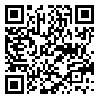Volume 22, Issue 2 (Summer 2014)
Avicenna J Nurs Midwifery Care 2014, 22(2): 5-14 |
Back to browse issues page
Download citation:
BibTeX | RIS | EndNote | Medlars | ProCite | Reference Manager | RefWorks
Send citation to:



BibTeX | RIS | EndNote | Medlars | ProCite | Reference Manager | RefWorks
Send citation to:
karami G, Khazaei M, Rezaii Mofrad M R, Rabani D, GHilasi H. Evaluation risk of transmission nosocomial infection in ICU Ward of Kashan Behashti hospital in 2012. Avicenna J Nurs Midwifery Care 2014; 22 (2) :5-14
URL: http://nmj.umsha.ac.ir/article-1-1170-en.html
URL: http://nmj.umsha.ac.ir/article-1-1170-en.html
Evaluation risk of transmission nosocomial infection in ICU Ward of Kashan Behashti hospital in 2012
Ghodratollah Karami *1 
 , Mohhamad Khazaei
, Mohhamad Khazaei 
 , Mohhamad reza Rezaii Mofrad
, Mohhamad reza Rezaii Mofrad 
 , Davar Rabani
, Davar Rabani 
 , Hamidreza GHilasi
, Hamidreza GHilasi 


 , Mohhamad Khazaei
, Mohhamad Khazaei 
 , Mohhamad reza Rezaii Mofrad
, Mohhamad reza Rezaii Mofrad 
 , Davar Rabani
, Davar Rabani 
 , Hamidreza GHilasi
, Hamidreza GHilasi 

1- qom medical university , gh.karami@muq.ac.ir
Abstract: (17897 Views)
Background: Microbial contaminations occurred in “Intensive Care Unit” (ICU) is the substantial cause of infection transmission within hospitals. The infectious organisms can be transmitted mainly through contact with the surface of instruments. Indicating the contaminated sources is the primary step during the infection control program. This study aimed to evaluate the risk of cross infection in hospital ICU.
Methods: The study was performed during ten subsequent weeks in two distinct phases consisting of “Before” and “After” the cleaning program. Assessment of the cleaning efficacy was based on the ACC analysis, Gram staining, Cathalaze, Coagulaze, MSA and DNase approaches. Final results were reported as “Clean” and “Dirty”. The Mc Nemmar nonparametric analysis was used through the SPSS software version18.
Result: Visual assessment of instrument surfaces revealed 86% contamination. Using the SA and ACC indicators illustrated the contamination levels of 76.5% and 12.7%, respectively. The maximum levels of contamination according to visual, SA and ACC approaches were belonged to door handles (100%), floor and patient bed and chairs (85%), and desk belonged to patient bed and waiting chair (22.5%), respectively. The rate of contamination after the cleaning program was decreased for telephone set using the visual method (p<0.021). The rate of contamination after the cleaning program also was decreased for patient bedsides using the ACC method (p<0.021).
Conclusion: The risk of infection transmission can be afforded via the source identification and establishing a cleaning and disinfection program. Preparing the integrated instruction and guideline regarding to the cleaning, disinfection and continues monitoring would be efficient to reduce the risk of cross infections.
Type of Study: Original Research |
Subject:
Midwifery
Received: 2014/01/21 | Accepted: 2014/07/6 | Published: 2014/07/12
Received: 2014/01/21 | Accepted: 2014/07/6 | Published: 2014/07/12
Send email to the article author
| Rights and permissions | |
 |
This work is licensed under a Creative Commons Attribution-NonCommercial 4.0 International License. |



 gmail.com
gmail.com